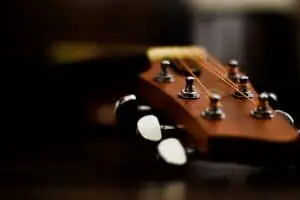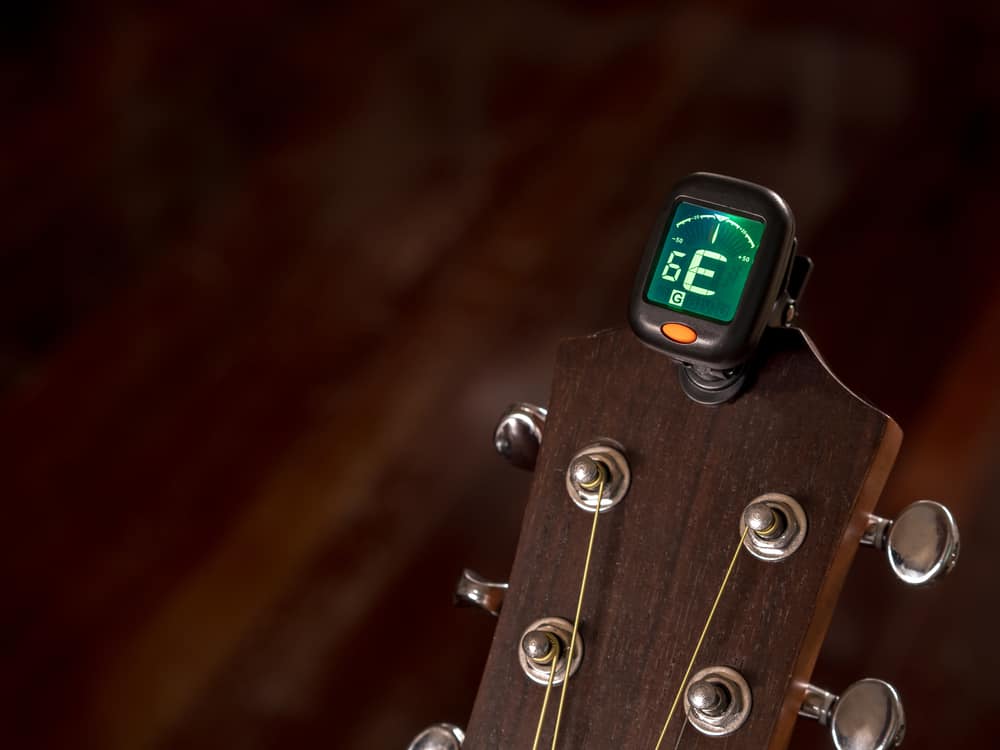
If you’re a guitar player, you know that one of the most important things is keeping your strings in tune. In tune simply means that all the strings on your guitar are in the correct pitches. Strings that are out of tune can make even the most simple chords sound terrible.
So what are guitar strings tuned to?
Typically, a guitar consists of six strings arranged in a particular order. To be exact, from low to high, standard guitar tuning starting from the thickest, lowest-pitched string (the 6th string) at the top of the neck is E–A–D–G–B–E.
In this guide, we’ll take a closer look at what guitar strings are tuned to and some tuning tips for your guitar.
What Are Guitar Strings Tuned To?

Any musician will tell you that the correct tuning is essential for playing a good song. But what exactly are guitar strings tuned to?
Most guitars have six strings, usually tuned in one of two standard ways. The first, known as Standard Tuning, is from low to high: E-A-D-G-B-E.
The second, called Drop D Tuning, keeps the low E string at the same pitch but lowers the pitch of the other strings by a whole step: D-A-D-G-B-E.
Regardless of which tuning you use, the order of the strings from thinnest to thickest will always be the same: E, B, G, D, A, E. When you tune your guitar by ear, you’ll start with the lowest string (E) and work your way up to the highest (E).
To tune a guitar, you need to adjust the tension of the strings so that they all produce notes of the same pitch. For example, if the low E string is too loose, it will produce a lower note than the other strings.
To fix this, you would need to tighten the low E string until it produces the same note as the other strings.
Mnemonic To Remember Guitar Strings Order
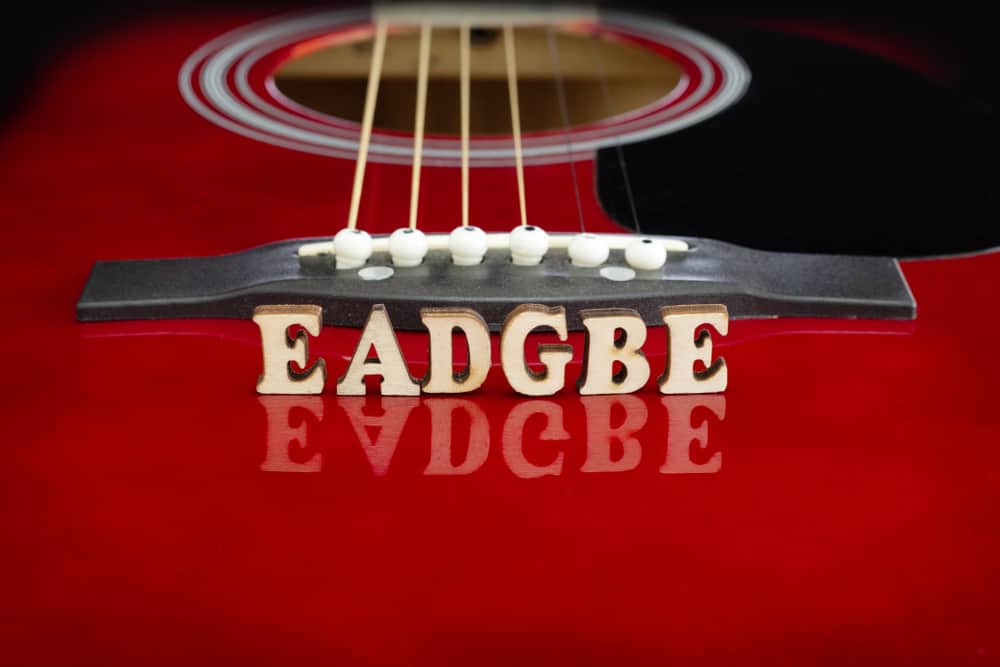
One of the first things any aspiring guitar player needs to learn is the order of the strings. Most guitars have six strings, which are usually tuned to the following notes: E, A, D, G, B, and E. Of course, there are many different ways to tune a guitar, but this is the most common arrangement.
For many beginners, remembering the order of the strings can be a challenge. However, there is a simple mnemonic that can help:
Every Alligator Digs Good Bacon & Eggs
When you break it down, each letter in this sentence corresponds to a string on the guitar: E (Every), A (Alligator), D (Dig), G (Good), B (Bacon), and E (Eggs).
Next time you struggle to remember the order of the strings, just think about this mnemonic, and you’ll be back on track in no time.
How To Tune a Guitar Using a Tuner
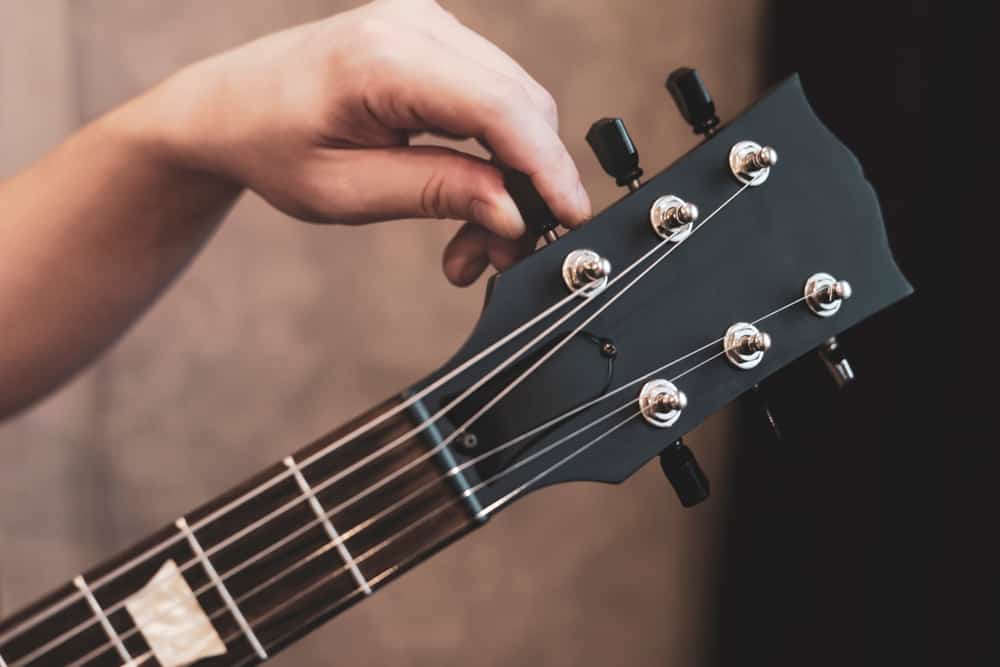
At some point, every guitar player will need to learn how to tune their instrument using a tuner. While it may seem daunting at first, it’s actually quite simple. All you need is a tuning fork or pitch pipe and a reliable tuner. Here’s a step-by-step guide to help you get started.
Step 1
First, ensure your guitar is in good condition and the strings are tightened properly. If they’re too loose, they won’t produce the correct note when you pluck them. If they’re too tight, they could break.
Step 2
Next, find a quiet place to tune your guitar so you can concentrate on hearing the correct pitches. Once you’re ready, strike the tuning fork or pitch pipe and hold it close to the headstock of your guitar. Pluck the string corresponding to the note you’re trying to tune to. For example, pluck the Low E string if you’re tuning to an E.
Step 3
Now, look at the tuner and turn the tuning knob until the needle is in the green range and pointing directly at the E note. Once it is, tighten the string so it’s in tune. Repeat this process for each string on your guitar.
Congratulations! You’ve just tuned your guitar! Now grab a pick and start playing!
Can You Tune a Guitar Without a Tuner?
There are a few ways to tune a guitar without using a tuner.
- Using a reference note: This can be another guitar already in tune or a pitch pipe. Once you have found a reference note, you can tune the rest of your strings by ear.
- Mobile apps: These apps use the microphone on your phone to listen to the strings and tell you which ones are out of tune. They’re not 100% accurate but can be a lifesaver when you’re in a pinch.
Take Care of Your Guitar
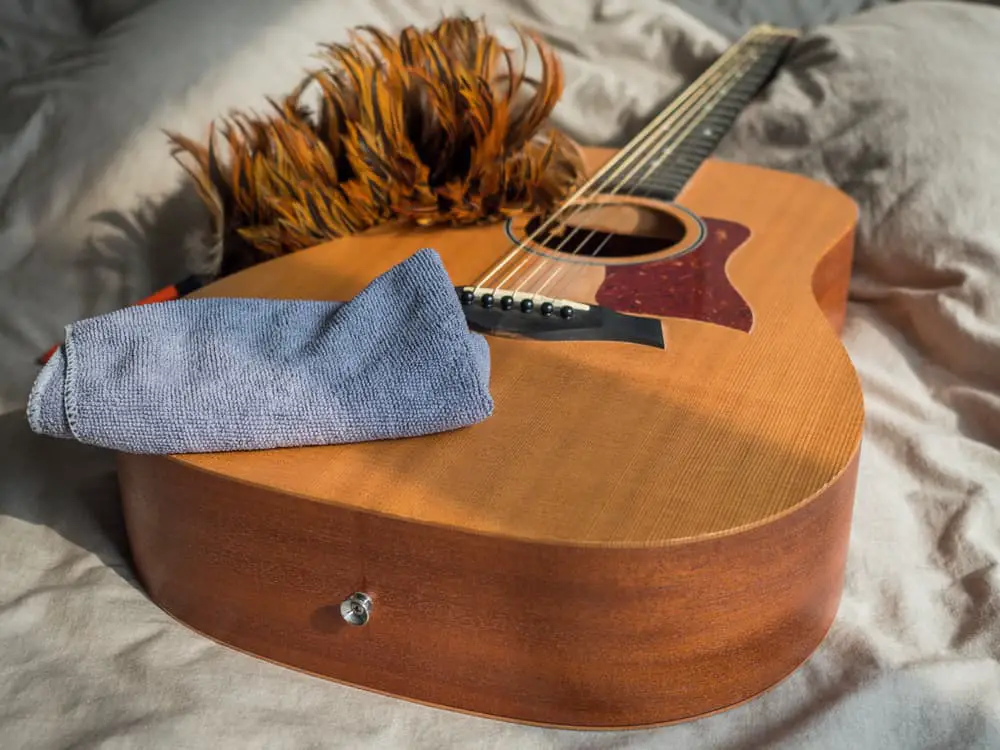
Hot or cold temperatures can cause the strings to expand or contract, making them more challenging to tune. Prolonged exposure to either hot or cold temperatures can also damage the body of the guitar.
When not in use, store your guitar in a cool, dry place out of direct sunlight. If you take your guitar out in extreme temperatures, warm it up or cool it down gradually to avoid sudden temperature changes.
By taking care of your guitar, you can prolong its tuning and ensure that it sounds its best for years to come.
Final Thoughts
So there you have it- a comprehensive guide to guitar strings, tuners, and how to tune your guitar without one. Whether you’re just starting out or playing for years, keeping your instrument in top shape by regularly tuning it is essential. With a bit of practice, you’ll be a pro in no time!




